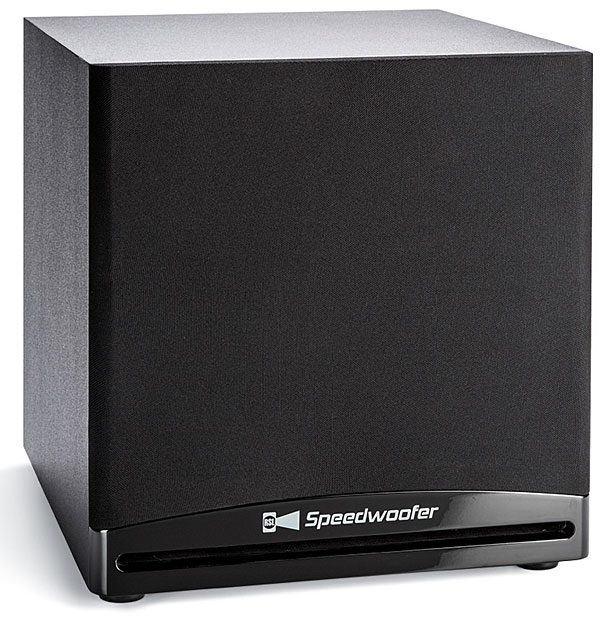RSL Speakers CG3 5.1 Speaker System Review Page 2
The CG3s’ honest bass rolloff made achieving a tight, musical blend with the Speedwoofer 10S child’s play, or so it was in my room. Truth to tell, I simply turned on the sub, set a 100-Hz high-pass crossover on my pre/pro for the CG3s, and adjusted level to taste. That was it: None of the usual fiddling with subwoofer phase seemed necessary, nor did fine-tuning the placement, crossover, or level. And the match was virtually perfect, such that James Taylor’s “Line ’Em Up” (Hourglass), a near-ideal recording for checking subwoofer mating, delivered its very richly balanced lower bass without tubbiness or boom. I ultimately went to an 80-Hz crossover, which worked well for my room (and my taste), but this would be near the lower limit for the CG3s, and some rooms will undoubtedly work better with 100 or even 120 Hz. (At the latter setting especially, subwoofer placement becomes critical, to avoid “pulling” bass instruments and voices toward the sub, and blending often becomes trickier.)

Small, but Still Big
In multichannel duty, the CG3/CG23 array proved a fine small-speaker layout. The two-woofer, horizontally positioned center speaker made an acceptable but not faultless tonal match: In direct comparisons of center versus dual-mono on announcers and such, the CG23 showed a distinct addition to male-voice weight or chestiness, as well as a less prominent but still audible emphasis on female-voice sharpness. Neither coloration was enough to draw attention in full-system listening—and certainly not in normal entertainment movie/TV viewing—but both were obvious enough in direct comparisons. On the plus side, the CG23 sounded virtually identical on axis or up to nearly 35 degrees off axis (other than the inevitable reduction in top-treble air)—hardly universal among horizontal dual-woofer center speakers. So viewers relegated to the end of the sofa or a side chair should still enjoy tonally solid sound. [Editor’s Note: RSL clarified for us during our fact-check phase that the minor difference in tonal balance between the CG3 and CG23 that our reviewer heard is intentional, noting that “the CG23 is designed to slightly favor the range that makes dialogue more distinct”— a characteristic that about half of its customers prefer and which prompts that group to often to use three of the larger LCR monitors (at least in the previous CG4 line) across all three front channels.—RS]
I briefly borrowed one of the surround CG3s to try a matched-trio front array. This worked very well indeed, and I think I might recommend it where space and layout permit. RSL also obligingly sent me an extra CG23, so I could try a pair in a vertical stereo array. Full-range two-channel playback sounded closely matched to that of the CG3s, but with about a half-octave more usable deep bass and several decibels greater peak-level capacity, so I think an all-CG23 front layout would also be worth consideration.

A full-system workout on the soundtrack of a big-budget film, such as the Dolby TrueHD mix of Pan, proved impressive. Dialogue was clear and intelligible but naturally voiced, while a solid front-stage image of ambience, music, and effects from the flanking CG3 pair was fully evident on scenes like chapter 3’s Lost Boys/pirates chant. In the back, the surround CG3s performed much as I expect any competent small two-ways to do when arrayed as I did these, to wash a bit along the side walls. Which is to say: entirely acceptable in timbral terms, free of any obviously audible cues that might draw attention from the screen, and with workable doses of ambience and acoustic space.
I can fully endorse David Vaughn’s judgment last year that the Speedwoofer 10S is a cut-rate superstar. RSL’s 10-incher delivered unexpected slam down well below 35 Hz on soundtrack cues such as Apollo 13’s blast-off, which it delivered with impressive scale—especially given that my frame of reference is a hulking SVS PC-12 Ultra. And on material even lower, such as a hi-res file of a Buxtehude pipe-organ chorale setting with a low G pedal tone at about 26 Hz, musically productive fundamental tone was perfectly audible. One of my favorite subwoofer tests is Lou Reed’s classic “Walk on the Wild Side” played at reference-level-plus—with the front speakers disconnected. A prominently mixed string bass (the lower of the track’s two basses) slides obligingly back and forth between D and G (roughly 75 and 50 Hz), a range that will encompass the maximum output of nearly any subwoofer. Thus, port chuffing, peak/dipping, slapping, or cone breakup will be comparatively easy to hear. The Speedwoofer 10S displayed modest port noise—but only at levels beginning approximately 5 dB above THX reference, a result that earns very high marks in my book and makes the noise entirely inaudible in a fullsystem setting. I had to work hard to stress it.

Small Is Good, Cheap Is Better
It is axiomatic that there’s never a good time to be poor. Who knows this better than an audio journalist? But what a great time it is now to be an audiophile of limited means! In the past few years, we’ve seen a parade of superb, entry-level/serious-sound loudspeaker designs from near and far that have rewritten the rules for the penurious audiophile. RSL’s
CG3 and CG23 are the newest, the smallest, and among the most affordable arrivals, but they give up very little in sonic refinement or range to any predecessors—including RSL’s own CG4 array—and they lose only a few tablespoons of peak level in dynamic impact against larger brethren. For anyone with an oyster-tight budget and limited space, they’re an unimpeachable choice.
- Log in or register to post comments






























































